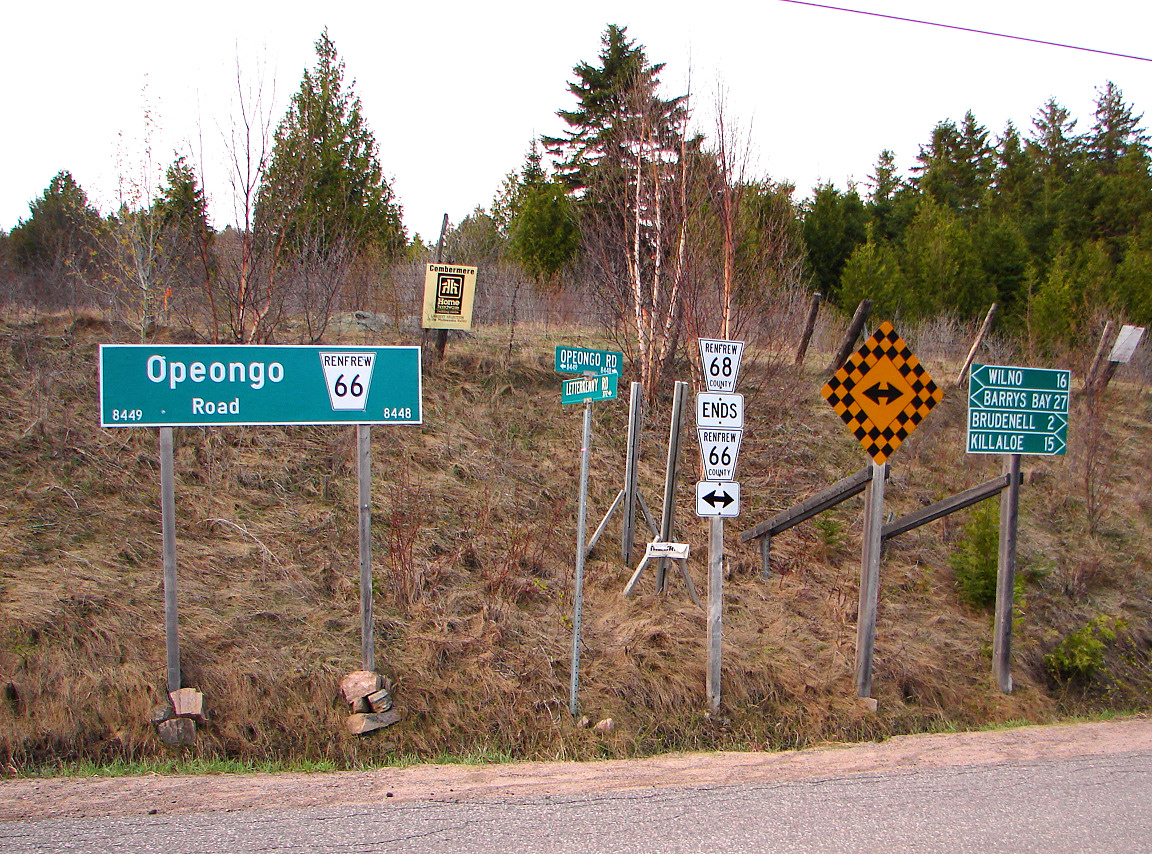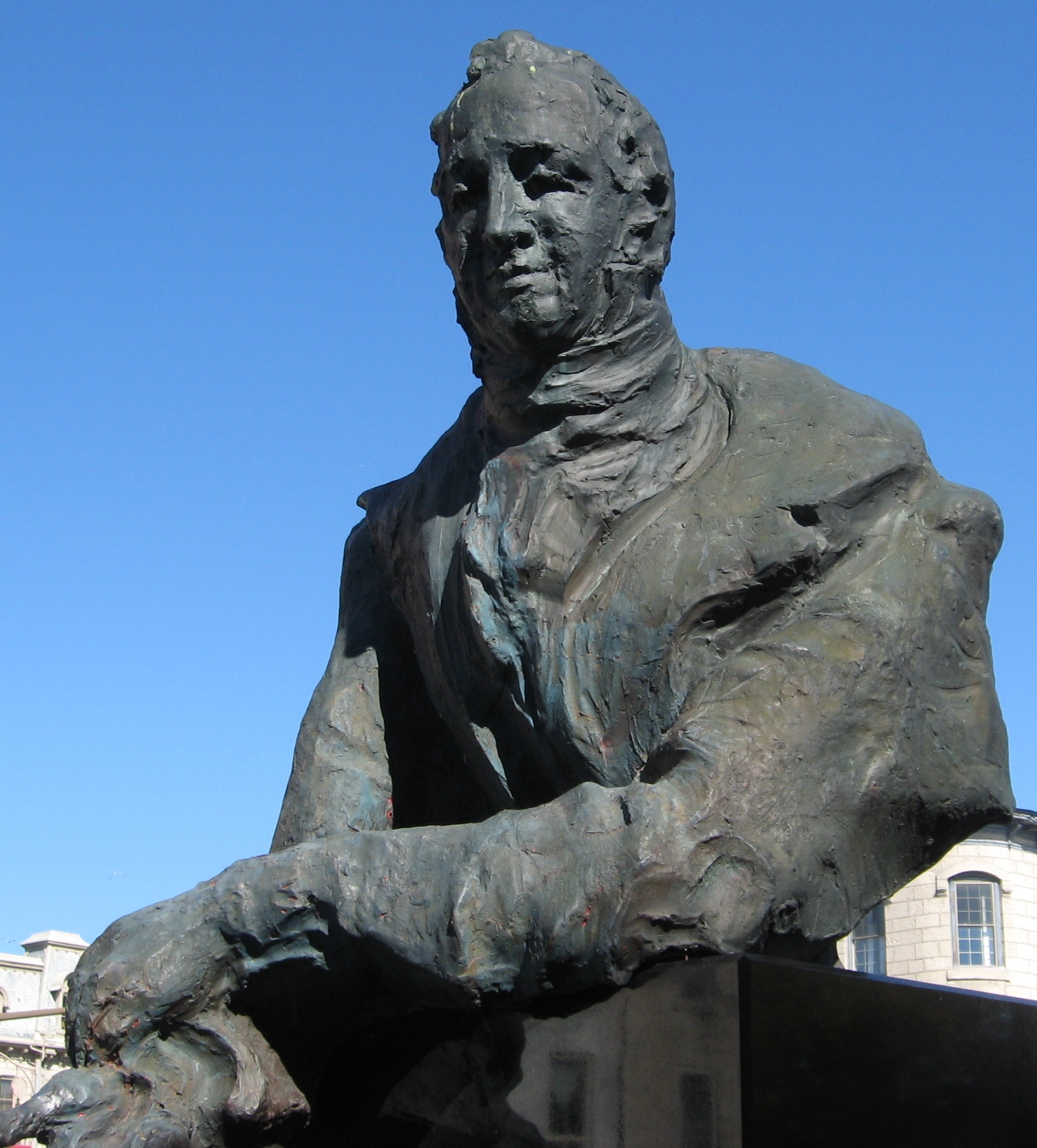|
List Of Ontario Colonization Roads
The colonization roads were created during the 1840s and 1850s to open up or provide access to areas in Central and Eastern Ontario for settlement and agricultural development. The colonization roads were used by settlers to lead them toward areas for settlement, much like modern-day highways. History The colonization roads of the 1840s and 1850s were preceded by other government-sponsored road programmes going back to the period immediately after the American Revolutionary War. One early road was cut through the geographic Beverley Township from Ancaster westward toward the Grand River by two Englishmen named Ward and Smith in 1799–1800. This allowed European settlers to access the northern part of the Grand River Valley. During and after the War of 1812, government spending on roads in Upper Canada (present-day Ontario) increased significantly, leading to the improvement and extension of a number of roads. Roads into the interior were still not plentiful, however. By this t ... [...More Info...] [...Related Items...] OR: [Wikipedia] [Google] [Baidu] |
London, Ontario
London (pronounced ) is a city in southwestern Ontario, Canada, along the Quebec City–Windsor Corridor. The city had a population of 422,324 according to the 2021 Canadian census. London is at the confluence of the Thames River, approximately from both Toronto and Detroit; and about from Buffalo, New York. The city of London is politically separate from Middlesex County, though it remains the county seat. London and the Thames were named in 1793 by John Graves Simcoe, who proposed the site for the capital city of Upper Canada. The first European settlement was between 1801 and 1804 by Peter Hagerman. The village was founded in 1826 and incorporated in 1855. Since then, London has grown to be the largest southwestern Ontario municipality and Canada's 11th largest metropolitan area, having annexed many of the smaller communities that surround it. London is a regional centre of healthcare and education, being home to the University of Western Ontario (which brands ... [...More Info...] [...Related Items...] OR: [Wikipedia] [Google] [Baidu] |
Muskeg
Muskeg (Ojibwe: mashkiig; cr, maskīk; french: fondrière de mousse, lit. ''moss bog'') is a peat-forming ecosystem found in several northern climates, most commonly in Arctic and boreal areas. Muskeg is approximately synonymous with bog or peatland, and is a standard term in Western Canada and Alaska. The term became common in these areas because it is of Cree origin; (ᒪᐢᑫᐠ) meaning low-lying marsh. Muskeg consists of non-living organic material in various states of decomposition (as peat), ranging from fairly intact sphagnum moss, to sedge peat, to highly decomposed humus. Pieces of wood can make up five to fifteen percent of the peat soil. The water table tends to be near the surface. The sphagnum moss forming it can hold fifteen to thirty times its own weight in water, which allows the spongy wet muskeg to also form on sloping ground. Muskeg patches are ideal habitats for beavers, pitcher plants, agaric mushrooms and a variety of other organisms. Composit ... [...More Info...] [...Related Items...] OR: [Wikipedia] [Google] [Baidu] |
Robert Bell (Ottawa Politician)
Robert Bell (1821 – February 25, 1873) was a surveyor, journalist and political figure in Canada West. He was born in Ireland in 1821 and arrived in New York state with his parents. In 1823, they moved to a farm near Kemptville, Upper Canada. He qualified as a land surveyor for the province in 1843. He moved to Bytown, where he began work as a surveyor. He surveyed the Muskoka, Haliburton and Nipissing areas as part of the government's plan to open up these areas for settlement. In 1849, he purchased the Bytown Packet newspaper, renamed the Ottawa Citizen in 1851, from Henry J. Friel and John George Bell. In it Bell expounded his ideas for promoting the settlement of the waste lands between Bytown and Lake Huron. He helped found the Bytown and Prescott Railway and later became president. He served on the town council for Bytown and later represented Russell in the 7th and 8th Parliaments for the Province of Canada. He died in Hull, Quebec Hull is the central business dist ... [...More Info...] [...Related Items...] OR: [Wikipedia] [Google] [Baidu] |
Surveying
Surveying or land surveying is the technique, profession, art, and science of determining the terrestrial two-dimensional or three-dimensional positions of points and the distances and angles between them. A land surveying professional is called a land surveyor. These points are usually on the surface of the Earth, and they are often used to establish maps and boundaries for ownership, locations, such as the designed positions of structural components for construction or the surface location of subsurface features, or other purposes required by government or civil law, such as property sales. Surveyors work with elements of geodesy, geometry, trigonometry, regression analysis, physics, engineering, metrology, programming languages, and the law. They use equipment, such as total stations, robotic total stations, theodolites, GNSS receivers, retroreflectors, 3D scanners, LiDAR sensors, radios, inclinometer, handheld tablets, optical and digital levels, subsurface loc ... [...More Info...] [...Related Items...] OR: [Wikipedia] [Google] [Baidu] |
Georgian Bay
Georgian Bay (french: Baie Georgienne) is a large bay of Lake Huron, in the Laurentia bioregion. It is located entirely within the borders of Ontario, Canada. The main body of the bay lies east of the Bruce Peninsula and Manitoulin Island. To its northwest is the North Channel. Georgian Bay is surrounded by (listed clockwise) the districts of Manitoulin, Sudbury, Parry Sound and Muskoka, as well as the more populous counties of Simcoe, Grey and Bruce. The Main Channel separates the Bruce Peninsula from Manitoulin Island and connects Georgian Bay to the rest of Lake Huron. The North Channel, located between Manitoulin Island and the Sudbury District, west of Killarney, was once a popular route for steamships and is now used by a variety of pleasure craft to travel to and from Georgian Bay. The shores and waterways of the Georgian Bay are the traditional domain of the Anishinaabeg First Nations peoples to the north and Huron-Petun (Wyandot) to the south. The bay was th ... [...More Info...] [...Related Items...] OR: [Wikipedia] [Google] [Baidu] |
Ottawa Valley
The Ottawa Valley is the valley of the Ottawa River, along the boundary between Eastern Ontario and the Outaouais, Quebec, Canada. The valley is the transition between the Saint Lawrence Lowlands and the Canadian Shield. Because of the surrounding shield, the valley is narrow at its western end and then becomes increasingly wide (mainly on the Ontario side of the river) as it progresses eastward. The underlying geophysical structure is the Ottawa-Bonnechere Graben. Approximately 1.3 million people reside in the valley (''and along its tributaries''), around 80% of whom reside in Ottawa. The total area of the Ottawa Valley is 2.4 million ha (6 million ac). The National Capital Region area has just over 1.4 million inhabitants in both provinces. Near the City of Ottawa, the Ottawa Valley merges with the St. Lawrence Valley to the south to create a delta of flat farmland stretching unbroken from the Ottawa River to the Saint Lawrence River as far east as the island of Montreal ... [...More Info...] [...Related Items...] OR: [Wikipedia] [Google] [Baidu] |
Canadian Shield
The Canadian Shield (french: Bouclier canadien ), also called the Laurentian Plateau, is a geologic shield, a large area of exposed Precambrian igneous and high-grade metamorphic rocks. It forms the North American Craton (or Laurentia), the ancient geologic core of the North American continent. Glaciation has left the area with only a thin layer of soil, through which exposures of igneous bedrock resulting from its long volcanic history are frequently visible. As a deep, common, joined bedrock region in eastern and central Canada, the Shield stretches north from the Great Lakes to the Arctic Ocean, covering over half of Canada and most of Greenland; it also extends south into the northern reaches of the United States. Geographical extent The Canadian Shield is a physiographic division comprising four smaller physiographic provinces: the Laurentian Upland, Kazan Region, Davis and James. The shield extends into the United States as the Adirondack Mountains (connected by the ... [...More Info...] [...Related Items...] OR: [Wikipedia] [Google] [Baidu] |
Toronto–Sydenham Road
King's Highway 10, commonly referred to as Highway 10 and Hurontario Street, is a provincially maintained highway in the Canadian province of Ontario. The highway connects the northern end of Highway 410 just north of Brampton with Owen Sound on the southern shores of Georgian Bay, passing through the towns of Orangeville and Shelburne as well as several smaller villages along the way. It historically followed the Toronto–Sydenham Road, the southern part of which later became known as Hurontario Street. The section between Orangeville and Primrose was formerly part of Prince of Wales Road, which continues northwards after the highway turns west. Between Chatsworth and Owen Sound, Highway10 is concurrent with Highway 6. Highway10 was established in 1920 as one of the original provincial highways in Ontario, connecting Highway 5 in Cooksville with Owen Sound. It was extended south by 1937 to Highway 2 in Port Credit. That same year, it became the site of the fi ... [...More Info...] [...Related Items...] OR: [Wikipedia] [Google] [Baidu] |
Ontario Highway 8
King's Highway 8, commonly referred to as Highway 8, is a provincially maintained highway in the Canadian province of Ontario. The route travels from Highway 21 in Goderich, on the shores of Lake Huron, to Highway 5 in the outskirts of Hamilton near Lake Ontario. Before the 1970s, it continued east through Hamilton and along the edge of the Niagara Escarpment to the American border at the Whirlpool Bridge in Niagara Falls. However, the Queen Elizabeth Way (QEW) replaced the role of Highway8 between those two cities, and the highway was subsequently transferred from the province to the newly formed Regional Municipality of Niagara in 1970. In 1998, the remaining portion east of Peters Corners was transferred to the city of Hamilton. Between Stratford and Kitchener, Highway8 is concurrent with Highway 7. The two highways widen into a four-lane freeway east of New Hamburg, eventually becoming the Conestoga Parkway within Kitchener, where it splits with High ... [...More Info...] [...Related Items...] OR: [Wikipedia] [Google] [Baidu] |
Guelph, Ontario
Guelph ( ; 2021 Canadian Census population 143,740) is a city in Southwestern Ontario, Canada. Known as "The Royal City", Guelph is roughly east of Kitchener and west of Downtown Toronto, at the intersection of Highway 6, Highway 7 and Wellington County Road 124. It is the seat of Wellington County, but is politically independent of it. Guelph began as a settlement in the 1820s, established by Scotsman John Galt, who was in Upper Canada as the first Superintendent of the Canada Company. He based the headquarters, and his home, in the community. The area – much of which became Wellington County – had been part of the Halton Block, a Crown Reserve for the Six Nations Iroquois. Galt would later be considered as the founder of Guelph. For many years, Guelph ranked at or near the bottom of Canada's crime severity list. However, the 2017 Crime Severity Index showed a 15% increase from 2016. Guelph has been noted as having one of the lowest unemployment rates in the ... [...More Info...] [...Related Items...] OR: [Wikipedia] [Google] [Baidu] |


_crop.jpg)



